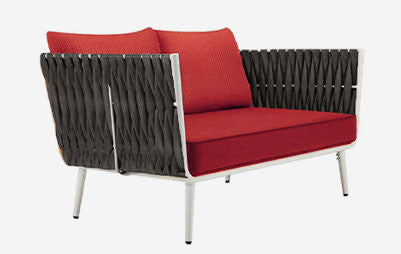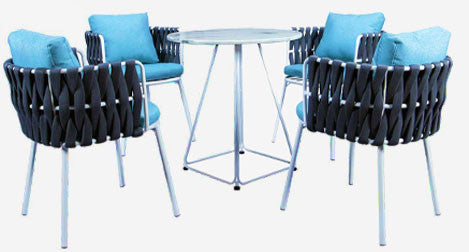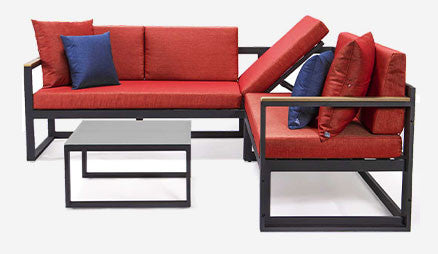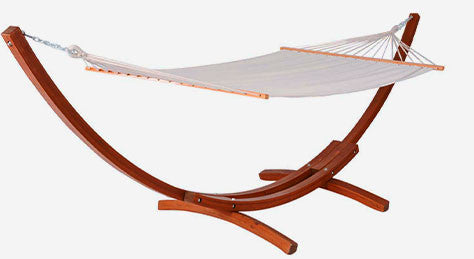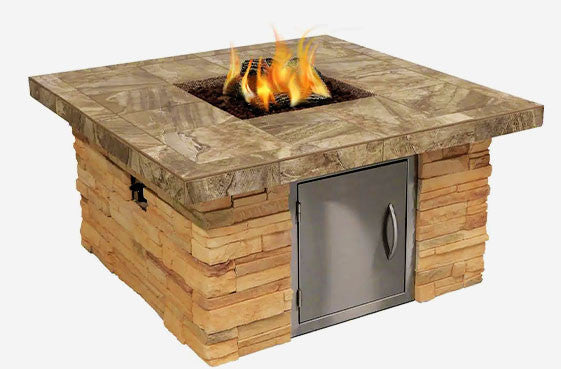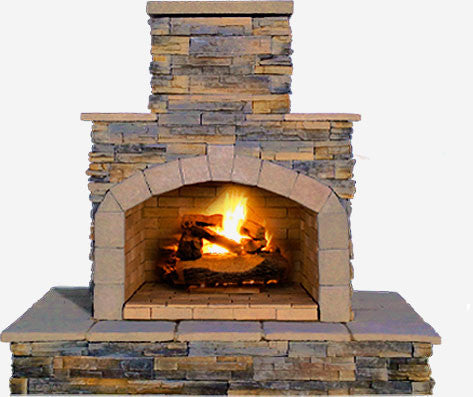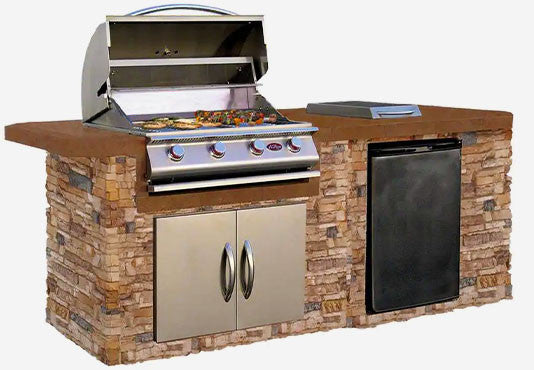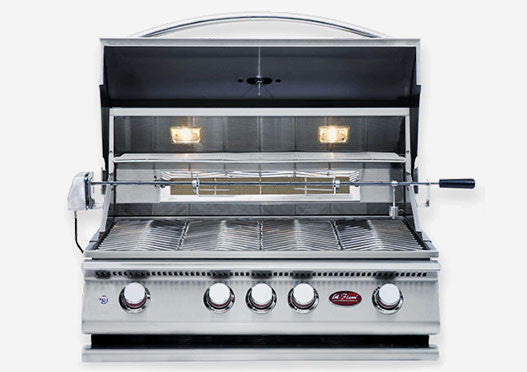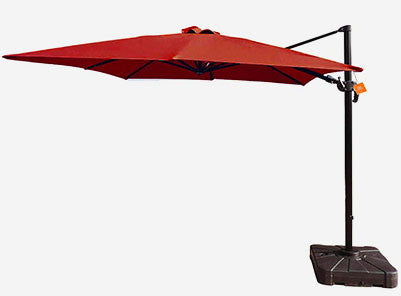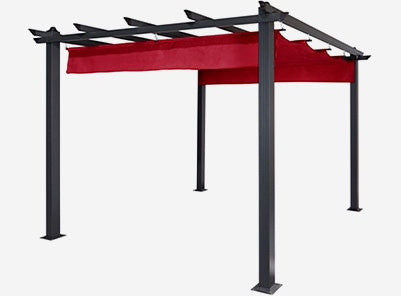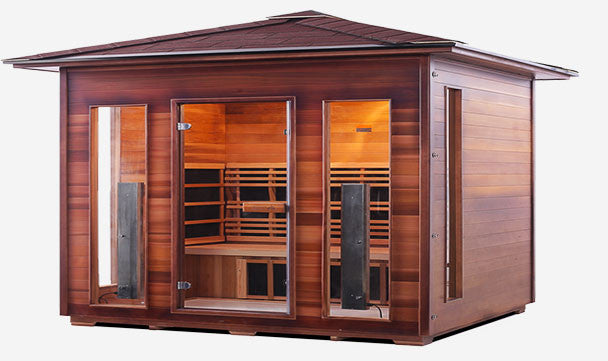You have no items in your shopping cart.
There’s nothing more primitive, more connected to our human-animal roots, than fire. And yet, for so many of us we come home at the end of our days and warm our food on an electrified surface or zap it in a microwave. “What about gas stoves?” You ask. “That’s fire.” Right you are, and I absolutely love cooking on a gas stove, but even for those lucky enough to have access to this amenity, there’s still something that sets cooking over a gas flame in your kitchen apart from most humans that ever lived…the wild outdoors. Most humans that have ever existed on this planet cooked their food over a glowing fire under the stars. (Realistically speaking they also cooked under clouds but that is far less poetic imagery.) So, if you have a fire feature of any sort in your backyard, why not utilize it to connect with your primitive roots!? Mix it up a little. Cook dinner with your family under the stars (or clouds).
Cooking over a live fire is not only inexplicably satisfying to the deepest fibers of our animal bodies, but it also just tastes better. When natural smoke coming from the wood is added to the flavors of a dish, it gives a different aroma and flavor that’s far more nourishing than a plastic packet nuked for 90 seconds in the microwave. Here we’re going to discuss a few logistics, and then provide some of our favorite backyard recipes!
The Fire
A perfect dinner can’t be achieved over a lousy fire. I was out at Joshua Tree with my partner over Christmas and someone (I won’t say who but it wasn’t me…) forgot the small hose that attaches the fuel canister to our camping grill. Our only means of cooking was to build a wood fire in the fire pit. Unfortunately, this didn’t go over too well either because the fire wasn’t big enough to produce the heat needed to reach all the way up to the cooking grate above (it was a very deep pit), so instead of cooking the food in our cast iron skillet we were just gently warming it. We ended up having to shuffle the burning logs around until we could set the skillet directly on the fire in order to get anything to cook, and this was a pain to do after the fire was already burning. So learn from me, if you’re going to cook over a fire there’s a few considerations you want to take into account before the thing is blazing.
If you’ve got a gas fire pit or fire table you want to cook over, there’s less here you need to worry about and you can get to a good “cook point” much faster, but you do want to make sure you set yourself up in such a way that you are not dripping food into the eyelets of your fuel line and gumming up the works. A gas fire is easier to start but not quite as resilient to “food slop” as a wood fire.
If you’re building with wood, choose good, dry wood. If your wood is damp or green or rotten (or moldy!) it’s going to smoke your food and your eyeballs (and all your clothing and your neighbors dog) far beyond the nostalgic levels of “campfire” smell that go infused into a Yankee Candle to remind you of everything you love about nature. Trying to cook food over wet wood will quickly remind you why you own a microwave, and it won’t be an experience you want to remember for years to come. At worst, cooking over moldy wood can even be toxic. So make good wood choices (mesquite, hickory and cherry wood are all good choices but certainly not the only options), it makes a difference.
After you’ve got the fuel sorted, you need to figure out your rigging. No doubt there’s a lot of gadgets and whoozits and rigamazuts out there that are designed for cooking over a fire, but I think that takes some of the fun out of it. Our ancestors probably weren’t getting on Amazon with a search for “campfire cooking setup” when they were setting up camp. Get creative. First look at what you’re cooking with. Dutch ovens, cast iron skillets, foil packs…all these things can pretty much be in the fire…though you don’t want to smother the fire. You can use a log setup that you plan to prop the cookware on, but these logs will eventually burn and collapse, so I’ve found that a few evenly sized rocks strategically placed in the pit can make a good surface to cook on that won’t buckle even when your fire has burned down to the glowing embers that are perfect for cooking on.
That brings me to the last major consideration in the fire phase of our backyard re-wilding…timing. As I mentioned above, a gas fire pit or table there is not too much to consider here…set up your rigging, turn it on and cook. But fire is a little more nuanced. Can you cook over licking flames? Yes. Do you want to? I guess it depends on how hungry you are…and how attached you are to your eyebrows. A flaming fire is not quite consistent in it’s heat since there is a lot of movement of the flames, especially if there’s any amount of wind, which means they may be running around under your skillet, cooking the handle rather than the food. This can lead to food cooking too fast or too slow or too much on one side, it also increases the chances of you burning yourself on that handle that was in the flames every time there was a gust of wind, and of you singeing off all the small hairs on your arms (another scent Yankee Candle won’t be celebrating anytime soon) or face!
The most ideal time to cook over a wood-burning fire is when the flames have settled to glowing red embers. This provides a heat source that is still very hot but at the same time consistent and easy to manage working over. Glowing red, that’s the sweet spot. Don’t wait too long because once it starts to ash it starts cooling down and producing more smoke. And if there’s any amount of wind that ash will get stirred up and sprinkled by the breeze faeries into your food…and that is a seasoning you could do without.
The Food
A variety of recipes can be tried on a fire pit as per your choice and taste. You can go for French toast if you like, or prepare a cheese and ham loaf. You can easily prepare all manner of veggie or meat kabobs, a choice as hearty as it is tasty and quite easy to cook over a fire pit. If you are cuddled up with your family in the winter, having a lazy Sunday by the fire, you can pop popcorn, which is the quickest thing to make on a fire pit. Put a teaspoon of kernels with a teaspoon of oil in a fashioned foil pouch and pop! S’mores is an obvious choice and time-honored tradition. If you want a little more substance than that but you’re still feeling as lazy as you are snackish, pop open a tube of croissant dough (just like our ancestors use to do), wrap a strip of dough around a stick and cook it over the coals, then coat with butter and sugar. Easy peezy lemon squeazy (don’t put lemon on your fire biscuits that’s gross). There’s endless possibilities as well as opportunity for ingenuity! But we’ve shared below more specifics on three of our favorite fire pit recipes.
***
Recipes
Lemon-Dill Salmon Foil Packs
Ingredients
- 1 tablespoon butter, softened
- 4 salmon fillets (6 ounces each)
- salt to taste
- pepper to taste
- 4-5 garlic cloves, smashed and diced
- 1/2 sliced onion
- 4 sprigs of dill
- 2 tablespoons fresh basil, minced
- 1 medium lemon, sliced
Directions
- Turn the gas on to medium heat or get your wood fire to glowing red embers. Set out 4 pieces of a heavy duty tinfoil, each about the size of a standard notebook. Butter the inside of each. Place in the center of each 1 salmon fillet and sprinkle with salt and pepper. Place onion, garlic, dill, basil and lemon on top then fold foil around the fish. Ensure it is tightly sealed.
- Place the salmon packs over your fire and cook about 8-10 minutes (varying with thickness of the fish, use good judgement…when it is done it will be opaque all the way through and just beginning to flake easily with a fork). Carefully open pack and allow steam to escape, let cool a few minutes before eating.
Fire Pit Dip
Ingredients
- 1 pack (8 oz.) cream cheese
- 1 can (15 oz.) chili with beans
- 2 cups shredded cheese of your choice
- Tortilla chips of your choice
- Salt to taste (sometimes the salt of the chips and the cheese is sufficient)
Directions
- Turn the gas on to medium heat or get your wood fire to glowing red embers. Spread cream cheese into the bottom of a disposable foil pie pan. Top with the chili beans and sprinkle with cheese.
- Place the pan over your fire and cook until cheese is melted, 6-8 minutes. Get pop open your chips and enjoy!
Fire Pit Peach Cobbler
Ingredients
- 2 cups all-purpose flour or flour substitute
- 1/2 to 1 cup sugar (or honey to taste)
- 1/2 teaspoon salt
- 4 teaspoons baking powder
- 1 cup milk
- 1/2 cup butter, melted
Filling:
- 2 cans (15 oz. each) sliced peaches or the equivalent freshly sliced
- 1/4 cup sugar (varied to taste)
- 1/2 teaspoon ground cinnamon (if you like)
Directions
- Turn the gas on to low heat or get your wood fire to glowing red embers.
- Line inside of a 10-in. Dutch oven with foil. Whisk together the first 4 ingredients in a large bowl. Add milk and butter then stir briefly and pour the mixture into your pan.
- If you’re using canned peaches, drain and set aside 1 cup of the liquid. Arrange peaches over the batter then sprinkle with sugar and cinnamon. Pour the peach juice over the fruit then put the lid on.
- Put the Dutch oven over the coals. Scoop some hot coals onto the top of pan lid then cook for 25-35 minutes, or until your fire pit cobbler is beginning to brown. Cook longer if needed, with the lid off if you wish to reduce liquid in the mix. When done remove from the fire and let stand for 15 minutes, lid off, before serving. Enjoy!


